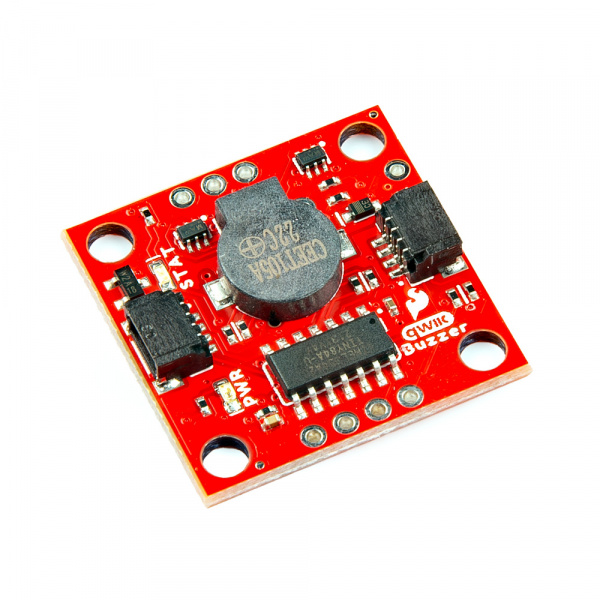Python module for the SparkFun Qwiic Buzzer
This python package is a port of the existing SparkFun Qwiic Buzzer Arduino Library This package can be used in conjunction with the overall SparkFun qwiic Python Package.
New to qwiic? Take a look at the entire SparkFun Qwiic ecosystem.
Your system might need modification. See this note.
The qwiic Buzzer Python package current supports the following platforms:
This driver package depends on the qwiic I2C driver: Qwiic_I2C_Py
The SparkFun qwiic Buzzer module documentation is hosted at ReadTheDocs
This repository is hosted on PyPi as the sparkfun-qwiic-buzzer package. On systems that support PyPi installation via pip, this library is installed using the following commands
For all users (note: the user must have sudo privileges):
sudo pip install sparkfun-qwiic-buzzerFor the current user:
pip install sparkfun-qwiic-buzzerTo install, make sure the setuptools package is installed on the system.
Direct installation at the command line:
python setup.py installTo build a package for use with pip:
python setup.py sdistA package file is built and placed in a subdirectory called dist. This package file can be installed using pip.
cd dist
pip install sparkfun_qwiic_buzzer-<version>.tar.gzFor this sensor to work on the Raspberry Pi, I2C clock stretching must be enabled.
To do this:
- Login as root to the target Raspberry Pi
- Open the file /boot/config.txt in your favorite editor (vi, nano ...etc)
- Scroll down until the block that contains the following is found:
dtparam=i2c_arm=on
dtparam=i2s=on
dtparam=spi=on- Add the following line:
# Enable I2C clock stretching
dtparam=i2c_arm_baudrate=10000- Save the file
- Reboot the raspberry pi
See the examples directory for more detailed use examples.
from __future__ import print_function
import qwiic_buzzer
import sys
import time
def runExample():
print("\nQwiic Buzzer Example 1 - Buzz\n")
# Create instance of device
my_buzzer = qwiic_buzzer.QwiicBuzzer()
# Initialize the device
if my_buzzer.begin() == False:
print("The device isn't connected to the system. Please check your connection", \
file=sys.stderr)
return
print("\nQwiic Buzzer ready!")
# Loop forever
while True:
my_buzzer.on()
time.sleep(1)
my_buzzer.off()
time.sleep(1)
if __name__ == '__main__':
try:
runExample()
except (KeyboardInterrupt, SystemExit) as exErr:
print("\nEnding Example")
sys.exit(0)






